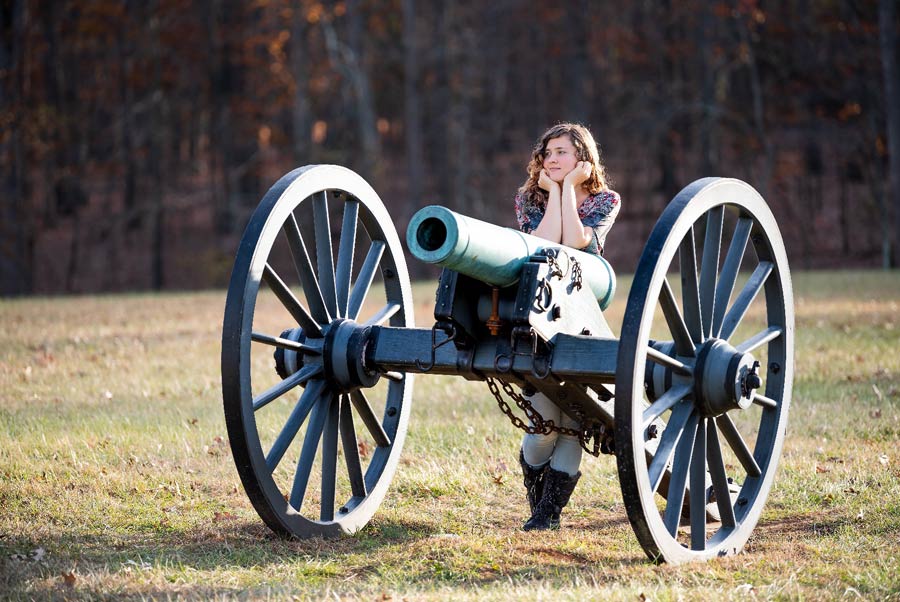Women’s Changing Roles Before and During the American Civil War
Overall, the nineteenth century saw women continue to fight to improve their own roles, as well as the rights of others, like slaves. Women participated in a series of conventions and protests to advocate for these rights, as well as for those such a slaves. America at this point, in the lead up to the American Civil War, was growing evermore divided. Eventually, these rowing tensions over slavery led the nation to war and pitted Americans against Americans. Growing tensions over slavery led the nation to war and pitted Americans against Americans. For women, the Civil War and Reconstruction periods ultimately redefined their role within the United States.
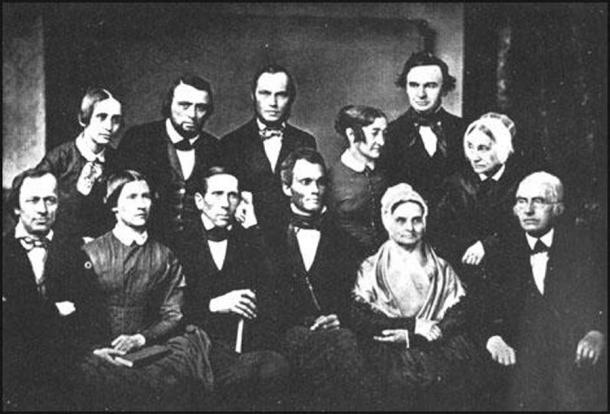
The Pennsylvania Anti-Slavery Society in 1851, 10 years before the outbreak of the American Civil War, made up of women and men. (Spartacus Educational)
Before the American Civil War Women Focused On Slavery Issue
The Anti-Slavery Convention of American Women, which met in New York City in May of 1837, demonstrated the combined belief in the injustices of slavery, as well as the subservient nature they were forced to endure. For example, during the conference, sisters S. M. Grimké and A. E. Grimké, referenced the 1793 Fugitive Slave Act, which stated that run-away slaves be returned to their masters.
They stated that this law contradicted the principles of liberty that had given the United States the moniker of being “the freest nation in the world,” since a large group of people living within the United States were enslaved.
- What Was Life Really Like for an Ancient Greek Woman?
- Feminism and the Battle for Women’s Rights in Ancient Egypt
A.E. Grimké also said that slavery was religiously immoral. For example, she stated, “[slaves being returned to their masters was] a daring infringement on the divine commands, ‘Thou shalt not deliver unto his master, the servant that is escaped from his master unto thee’”
However, throughout the convention, speakers also questioned and challenged beliefs within their religious texts; A.E. Grimké and Lucretia Mott, both argued that women were entitled to the moral rights within society, and should not have to be subservient to their husbands, which had been written within their scripture.
Another event that showed women’s actions to secure rights for all women was the Seneca Falls Convention in 1848 headed by Elizabeth Cady Stanton. Mimicking the rhetoric of the Declaration of Independence, the convention put forward a “Declaration of Sentiment” that stated the grievances made against women in society. For example, the declaration stated, “He [man] has never permitted her to exercise her inalienable right to the elective franchise.” This grievance describes women’s legal inability to vote within elections.
According to a video by Eric Foner, this was “the first, organized women’s suffrage gathering,” which directly highlighted these issues within American society.
The declaration further assesses other injustices women had been subjected to throughout history such as the inability to own their property, being denied educational opportunities, and laws regarding divorce. Women continued to conduct conferences and fairs to promote their agenda. For example, women continued to promote both abolitionists’ ideals and rights through these fairs, which were funded by abolitionist supporters.
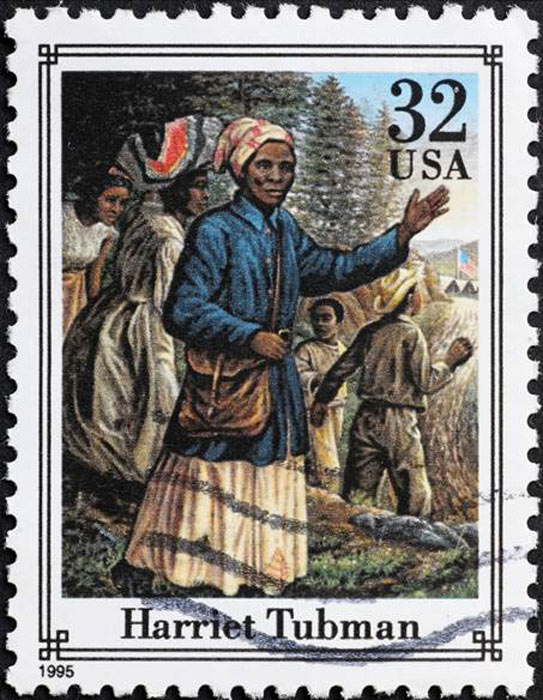
Harriet Tubman is probably the most famous slave of the American Civil War, which ended with freedom for so many slaves. (Silvio / Adobe Stock)
Women of Color Before and During the American Civil War
The experiences of women of color during the period leading to the American Civil War demonstrated the racial and gender differences existing within society. For example, Harriet Jacobs described her experience of being sexual abused by her master. Jacobs recounted, “My master met me at every turn, reminding me that I belonged to him, and swearing by heaven and earth that he would compel me to submit to him.”
Jacobs’ experience highlights the inability of enslaved women to escape, as well as the psychological torment they were subjected to. Additionally, Jacobs described that enslaved women were unable to disclose that their masters were fathers of their children, and that her master had fathered eleven slaves.
- What Makes Spartan Women So Different From Other Ancients?
- Culturally Misunderstood: The Struggles and Advances of Early American Women
Native American women were also forcibly placed within slavery. For example, Nancy, a Cherokee woman, was taken from her family and wrongly enslaved. In addition to being enslaved, Nancy also faced discrimination on both fronts for being both Native American and African, since both groups were negatively viewed.
However, during this period, women also fought against these struggles to escape their harsh living conditions. Enslaved women were among a large number of women who would run away, known as truants and absentees. Louisiana possessed the largest percentage of female runaways, at twenty-nine percent.
Other enslaved women would help runaways survive and stay hidden. For example, Aunt Fanny of Virginia would prepare food that she would give to runaways. Women also legally fought for their freedoms in court. For example, two Native American women, coincidently named Nancy, fought for their liberties citing that they had wrongfully been enslaved.
Some women used their religious devotion to persevere during this period. For example, Elizabeth, a former slave from Maryland, exemplified the struggle and determination to survive. Despite the psychological abuse of being taken from her family and physical torment she received for running away to find them, Elizabeth found solace in faith. After having a religious revelation, Elizabeth described herself as a “new creature in Christ” and dedicated her life to spreading his message, regardless of her living situation.”
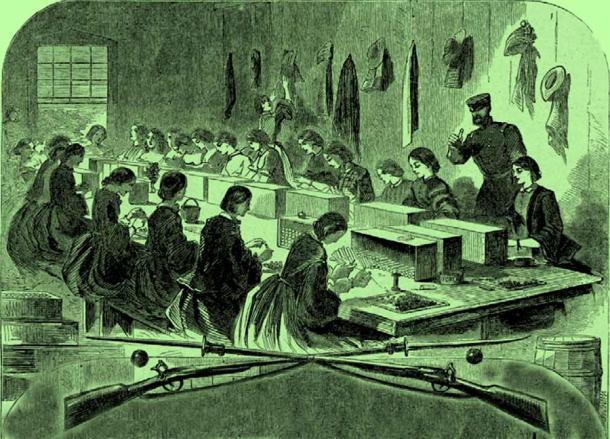
Women working at the U.S. Arsenal, Watertown, Massachusetts filling cartridges during the American Civil War. From Harper’s Weekly, July 1861. (Library of Congress)
When the Civil War Began Women Took On Many Roles
When war finally broke out and the nation officially divided, many women from the North and the South assumed roles traditionally held by men. Within the South, particularly in Virginia and Tennessee, the war reached the home front of many women. Although there was a large majority of women in disbelief that the war had come to their doorstep, women who had once lamented, “if only I were a man and could fight,” were now able to do things to support their cause.
Sarah Morgan from Louisiana expressed joy in the Confederacy because by exclaiming, “I confess myself a rebel, body and soul. Confess? I glory in it!” Thus, demonstrating her enthusiasm for the war despite the negative connotation of being associated with the Confederacy. Women within these communities formed soldiers’ aid societies, known as “angels of the confederacy,” to provide supplies to men at the front and shifted to areas where soldiers needed assistance.
Mary Boykin Chestnut, a Southern author and observer in Richmond, Virginia, noted, "One [an observer] saw a man too weak to hold his musket. She took it from him and helped the poor wounded fellow along.” They were able to transform homes and churches into hospitals, where women also provided food and nursed the wounded.
Most women on the Northern home front did not directly experience the war’s violence at their doorstep. However, many struggled financially after their male relatives or spouses went away to war. Much like the women of the South, Northern women found jobs in cities and towns in war-related industries, such as munitions factories. In Washington, D.C., women took desk jobs, once held by men, in departments of the federal government.
Like women in the South, Northern women assisted the war effort from the home front by making and gathering supplies for the troops, albeit more materials were produced in the North, thus Northern women were able to supply more supplies to the Union army.
Women also worked as nurses on the home front. For example, Clara Barton became a well-respected nurse, who aided soldiers in Massachusetts. This experience would ultimately lead her to founding the American Red Cross. Cornelia Hancock, a Union nurse, described her surroundings at the Battle of Gettysburg; despite the difficult and disturbing scenery, in which she would “cry” when writing to the wives of wounded soldiers, her efforts still helped save lives.
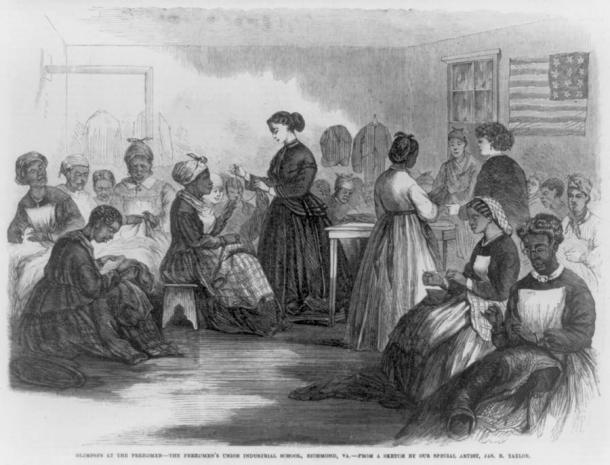
Through the supervision of the Freedmen's Bureau, northern teachers traveled into the South to provide education and training for the newly freed population. (Public domain)
After the Civil War Women’s Rights Grew Stronger Still
Following the Civil War, women’s evolving role continued as they advocated for their own rights as citizens. For example, many women would petition for suffrage, or the right to vote. In an 1866 petition to the Senate and House of Representatives, women argued that as a group they “represent[ed] fifteen million people” within the United States that did not have the right to vote.
- The American Revolution and Women’s Struggle Against Injustice
- Ancient Laws and Women’s Rights: The 6000-Year-Old World War Continues
Furthermore, since the Constitution recognizes everyone within the United States as “free people,” by law women were entitled to the same rights as men under the law.
African American women also played a prominent role in advancing women’s roles following the Civil War. For example, Harriet Tubman, who served as a nurse during the war, sent a petition to the United States Congress arguing for payment for her services, which demonstrated that women were entitled to compensation for services, similar to their male counterparts. African American woman ruled by white, southern men would no longer be tolerated. Freed women would argue their cases in court, albeit unsuccessfully due to the increasing racial divide, but also through self-defense. These events showcase the changing gender role identity within Southern society.
The period before the American Civil War was the beginning of massive change for women, white, colored and Native, across the United States, which continued to mount during the War and afterwards.
Top image: Young happy woman standing by an American Civil War canon in Manassas National Battlefield Park, Virginia. Source: Andriy Blokhin / Adobe Stock
This article is an edited extract from Anthony Ruggiero’s latest book titled, ‘The American Woman: A History of Oppression and Triumph’ available from Amazon here.
By Anthony Ruggiero
















